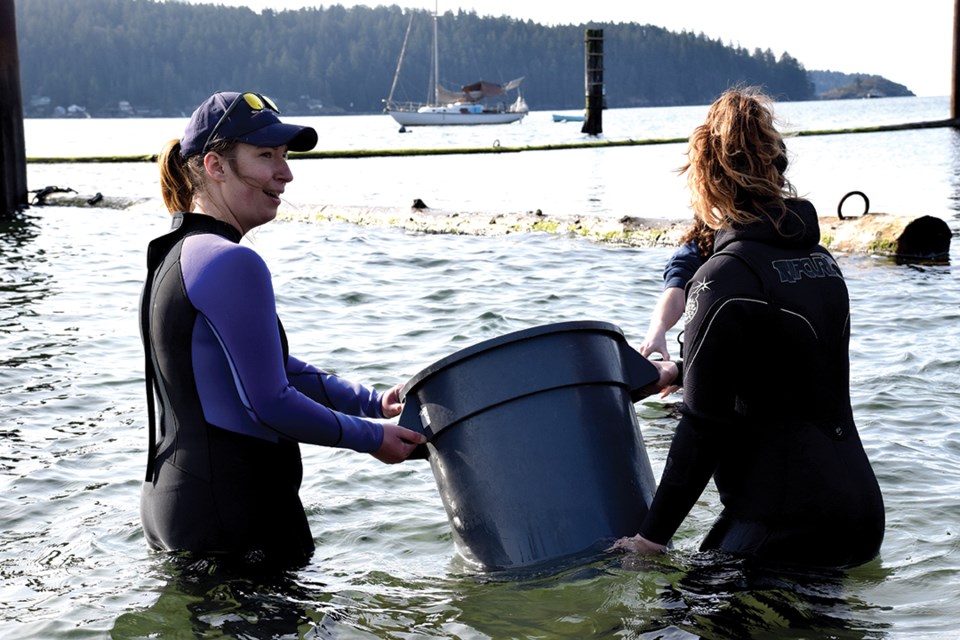Just days after more than 50 people took their turn to say goodbye to her, the resident octopus of Nicholas Sonntag Marine Education Centre (NSMEC) slipped quietly back into the ocean.
After encouraging her out of the bucket and into the not-quite-clear water near Armours Beach in Gibsons, centre curator Jenny Wright said she’s a little sad to see her go.
This particular giant Pacific octopus stood out for her boldness, Wright told Coast Reporter.
“Previous octopuses at the centre have been a bit shy and hid a lot, but she’s put on a few shows for the public,” Wright said. “She’s very curious, comes and explores the tank and has a good look at people as well.”
While staff never formally gave this octopus a name, she was often called Red for the colour she took on as she explored her tank. Others liked to call her Button.
The octopus is still young and comparatively small. She’s estimated to be around one year old, and when she first arrived at the centre, her mantle was measured at 10 centimetres. She’s since doubled, if not tripled in size, Wright said. A full-grown giant Pacific octopus can reach 16 feet (4.8 metres) across the span of their tentacles.
After six months at the centre, it’s time for her to find a new den, having quickly outgrown her manmade one. Her lifespan may be up to five years. In Howe Sound, she’ll live a solitary life hunting and eating. When it’s time to mate, she’ll seek out another octopus. She’ll care for her eggs for six months, neglecting all other responsibility. And then, once her eggs begin to hatch, her life will have come full circle and she will die from starvation. Many tiny octopus hatchlings will take her place in the ecosystem.
Wright said it’s a bittersweet goodbye for those who have come to know the octopus.
“I think everyone’s also excited to kind of see her going back into the natural environment as well, and back out into Howe Sound where she was collected from.”
On April 4, the aquarium invited visitors in to say goodbye to the many marine animals before they were released back into Howe Sound. The event was fully booked, and people attended in limited individual groups to maintain social distance. Before the pandemic, NSMEC held a release party when it was time to return the marine animals to Howe Sound. The public was invited to help, but with the pandemic, an in-person release party isn’t possible.
Instead, NSMEC will be hosting a virtual release on April 9 at noon featuring the likes of sea stars, sea cucumbers and bivalves. More than 100 creatures will be returning to their ocean habitat. While it’s less than their usual release amount, the centre will also be collecting fewer creatures for the time being. Anyone can tune in or watch it later. and other fish releases will be available on the .
Wright said the event will let people still feel involved, even though they can’t attend in person. It’s also an opportunity for people to get to know the local ecosystem that they otherwise may not be able to see, up close in all its vibrant colours.
“Hopefully, that will then encourage them to want to conserve and be aware of their environment, and maybe want to protect it as well,” she said.
As for the octopus, NSMEC staff donned wetsuits and waders to enter the water with her on April 6. They coaxed her out of the container they carried her in, and she dropped to the sandy bottom. For a moment, she lingered by their feet.
With a few quick moves of her tentacles, she’s gone. She’s home.
